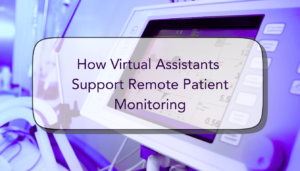Virtual Assistant for Family Medical Doctors: Boosting Efficiency and Patient Care
05 Jun 2025 By: Vlade Legaspi
Updated
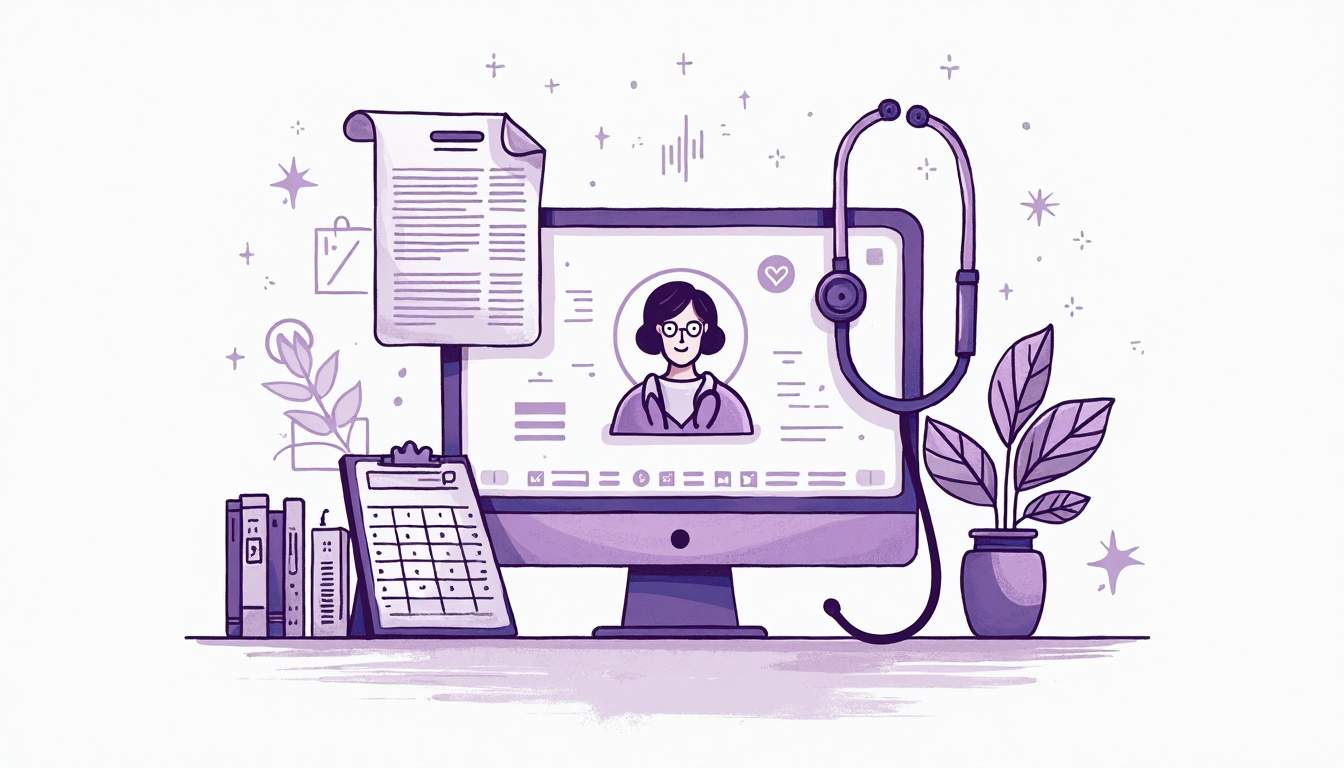
Family doctors face many daily challenges in today’s busy healthcare world. Juggling patient visits and paperwork can feel like too much. Virtual assistants now change how clinics work. With their help, doctors save time and work more smoothly. This boosts care for patients. This article shows how virtual assistants help family medicine.
Why Virtual Assistant For Family Medical Doctors Would Be a Big Help
Virtual assistants may not be in the room, but their presence is felt in every calm breath a doctor takes. They answer calls with care, send kind reminders, and sort through the clutter that can steal a doctor’s focus. They’re the gentle rhythm behind the scenes, giving doctors the gift of time, time to connect, to smile, to listen. In those quiet moments, healing begins.
In a world where doctors race against the clock, VAs offer something rare: room to breathe. They keep the chaos away from the exam room door, so doctors can be present where it matters most. Every chart filed, every call made, every detail handled by a virtual assistant for doctors brings a little more calm, a little more heart, into the care patients receive. They may work in the background, but their impact runs deep.
Types of Tasks Handled by Virtual Assistant
Virtual assistants step in to handle the busywork that often weighs doctors down. They schedule visits with care, update patient files, and answer billing questions with kindness. VAs can clear the clutter, giving doctors space to focus and truly be there for their patients. VAs don’t just complete tasks, they lift a burden from doctors.
Many VAs are skilled in the same tools doctors use every day. They glide through EHR systems, making sure records are accurate and easy to find. With their steady support, the whole practice feels more calm and connected. They bring a quiet order that lets doctors give their full heart to healing.
Virtual assistants are often the quiet link between patients and their care. They make sure no one forgets a telehealth visit and follow up with kindness, not just reminders. These thoughtful touches help patients feel seen and supported, making it easier for them to stay on track with treatment.
They also help prepare simple, clear materials that guide patients through their health journey. They ask gentle questions in early assessments and listen through feedback surveys. This honest input helps doctors learn, grow, and serve even better. With VAs, care becomes more personal, thoughtful, and complete.
Benefits of Implementing Virtual Assistants
Virtual assistants don’t just bring ease, they bring breathing room to tight budgets. For small clinics, hiring full-time staff isn’t always possible. VAs fill that gap with skill and heart, quietly keeping things running from afar.
With their help, practices can use their money where it counts most, on patients. Maybe that means better tools, more care options, or extra time with each person who walks through the door. VAs help clinics do more with less, so every patient gets the care they deserve.
Virtual assistants give practices the gift of flexibility. They’re there when things get hectic and step back when things slow down. This kind of support is gold in a field where patient needs can shift overnight. Doctors know they’re not alone, even on the busiest days.
VAs also help clinics stay close to the people they serve. They share updates online, respond with kindness, and help tell the practice’s story in a way that feels real. This builds trust, draws in new faces, and keeps long-time patients feeling connected. With a VA by their side, practices don’t just run, they grow, thrive, and stay rooted in the community.
Enhancing Patient Care Through Virtual Assistance
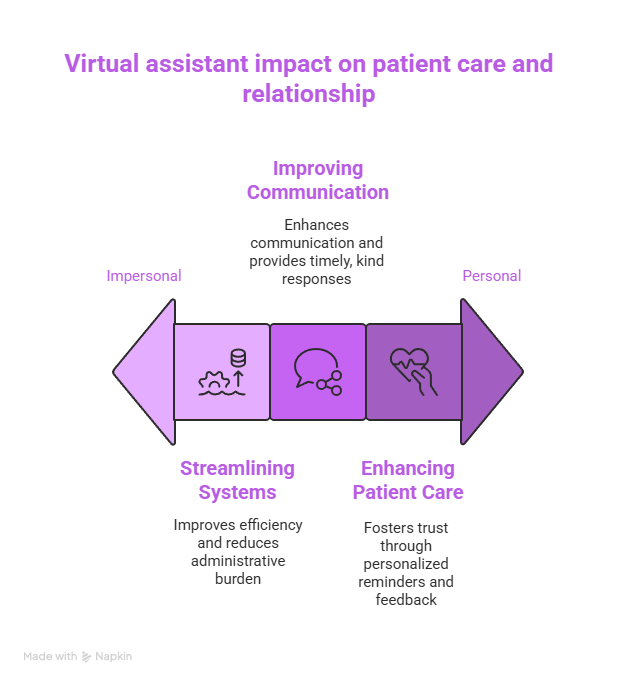
At the heart of family medicine is care, and virtual assistants help protect that. By taking on the daily tasks, they give doctors more time to truly be with patients. Less rushing, more listening.
That extra time means deeper conversations, clearer answers, and stronger bonds. Patients feel heard. Doctors feel present. And together, they build trust that leads to better health and lasting care.
Improving Communication with Patients
Good care starts with clear communication. Virtual assistants help keep that flow strong. They answer patient questions quickly and kindly, so no one feels left out or confused.
They also make sure follow-ups get booked and reminders go out on time. That steady, reliable support helps patients stay informed and feel cared for, every step of the way.
Trust grows when patients feel truly cared for, not just during the visit, but before and after too. Virtual assistants help make that care feel personal. They send gentle reminders that say, “We haven’t forgotten you,” and answer questions with patience and warmth. It’s these small moments that tell patients they matter.
After the visit, VAs ask, “How did it feel?” or “Is there anything we can do better?”, not from a script, but from a place of wanting to understand. That honest, human touch opens the door to real feedback. It helps doctors grow, helps patients feel heard, and helps care feel less like a system and more like a relationship.
Streamlining Patient Management Systems
Virtual assistants bring calm to the chaos of patient records. They keep charts tidy, info current, and everything in the right place. Doctors don’t waste time digging, they find what they need fast.
That kind of order isn’t just nice, it’s vital. Quick access to patient history can shape the next step in care. With VAs quietly managing the details, doctors can focus on making the best decisions, right when they’re needed most.
Virtual assistants help keep electronic health records clean, clear, and compliant. They make sure every detail is entered right, reducing mistakes that could affect care. Their work protects both the practice and the patients.
Beyond accuracy, VAs can spot patterns in the data like common health issues or who’s missing follow-ups. This helps doctors plan smarter, more personal care. It’s not just about records it’s about using that info to truly understand and serve each patient better.
Cost-Effectiveness of Virtual Assistants

For many family doctors, every dollar counts. Hiring full-time staff can feel out of reach, especially for small, close-knit clinics doing their best to care for their communities.
That’s where virtual assistants step in, with heart and skill, but without the big price tag. They give doctors the help they need, right when they need it, without the weight of extra overhead. It’s smart, it’s caring, and it lets practices pour more into what matters most, their patients
Reducing Overhead Costs
Virtual assistants work from afar, but their presence still brings comfort. Because they do not need a desk or equipment in the office, clinics save on space and bills.
Those savings go where they are needed most. Doctors can invest in better tools, more hands-on care, or added support for their patients. It is a small change with a big heart behind it.
Virtual assistants often work by the hour or per project, giving doctors more control over costs. Practices only pay for the help they need, when they need it.
This flexible support is a gift during busy seasons or when patient visits rise and fall. Doctors can adjust without stress or long-term ties, keeping care steady while the workload shifts.
Maximizing Revenue Through Improved Efficiency
Virtual assistants help doctors use their time better. With fewer admin tasks, doctors can focus on seeing more patients each day, which boosts income.
Better patient management also keeps people coming back. When care feels smooth and personal, patients stay loyal. That steady trust helps practices grow and thrive.
Hiring a virtual assistant can feel like finding the missing piece in a busy family practice. Many VAs come with real know-how in managing health records and using telehealth tools, making daily tasks easier and safer. They quietly handle the behind-the-scenes work, so doctors can focus on patients, not paperwork. With someone dependable helping carry the load, care feels smoother, calmer, and more personal. In a world where healthcare keeps changing, having that kind of support by your side can truly change everything.
Finding the Right Virtual Assistant
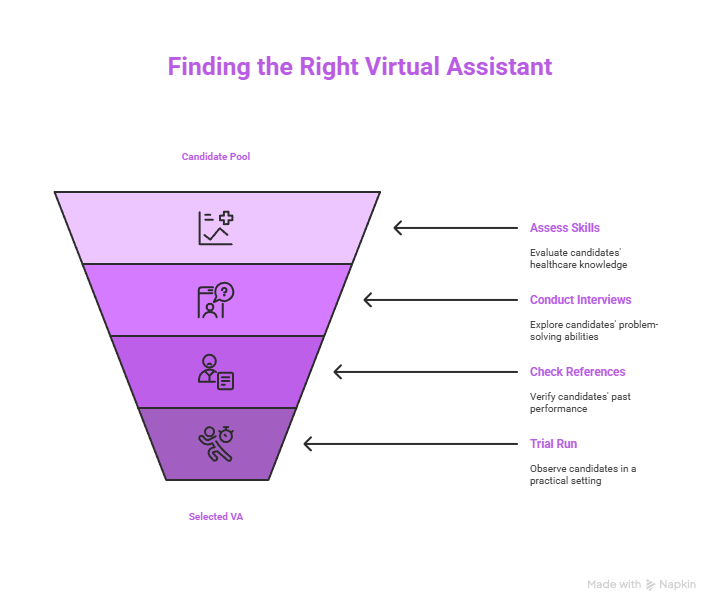
Choosing a virtual assistant feels more like inviting someone into your circle than just hiring help. It’s about finding a teammate you can trust to stand with you. In family medicine, that person needs more than admin skills, they need heart. The right VA understands the pace, the pressure, and the personal side of care. They respect every patient’s story, know their way around healthcare systems, and bring calm to the chaos. When you find the right one, it does not just make work easier, it makes the whole practice feel more supported, more connected, and more human.
Essential Skills and Qualifications
When looking for a virtual assistant, family doctors should seek someone who truly gets the rhythm of healthcare. It helps to find a VA who has walked that path, someone who speaks the language, understands the flow of a busy clinic, and knows how to handle patient records with care. This kind of experience is not just useful, it brings comfort. It means less training, fewer mistakes, and more trust right from the start. With the right VA, doctors can breathe a little easier knowing someone steady is there to help.
A great virtual assistant does more than manage tasks, they help patients feel at ease from the very first hello. Since they are often the first person a patient speaks with, their voice and words matter. They need to share information clearly, but also gently, with warmth and patience. Just as important is their eye for detail. The best VAs notice the small things, a name spelled wrong, a date that doesn’t match, a missing note. They follow up, fix it, and keep things running right. It is this mix of heart and focus that makes all the difference in a caring, trusted practice.
A strong virtual assistant is like the calm in the middle of the storm. In a busy medical practice, things move fast, calls come in, schedules shift, questions pile up. A good VA keeps it all moving with grace. They know how to juggle tasks without missing a beat, using tools like scheduling software to stay organized. But more than just staying busy, they know what matters most and when. That steady hand helps the whole practice feel smoother, more focused, and ready to care for every patient who walks through the door.
Conducting Interviews and Assessments
Finding the right virtual assistant goes beyond checking skills on paper, it’s about finding someone who can handle real-life moments with care and calm. Once you’ve found a few good candidates, take the time to talk with them. Ask how they would handle a busy phone line full of anxious patients, or what they’d do if two appointments got booked at the same time. These simple questions open a window into how they think, how they stay steady, and how well they’d fit into the heart of your practice. It’s in these honest, human answers that the right person often shines through.
Talking to past employers and checking a candidate’s experience can reveal a lot about how they work and how dependable they are. A strong virtual assistant can quickly become someone the whole practice relies on. To be sure it’s the right fit, a short trial run can help. It gives both sides a chance to see how things feel day to day, how the VA handles tasks, fits in with the team, and supports the flow of care. This kind of start builds trust early and sets the tone for a partnership rooted in support, clarity, and teamwork.
Integrating Virtual Assistants into Existing Workflows
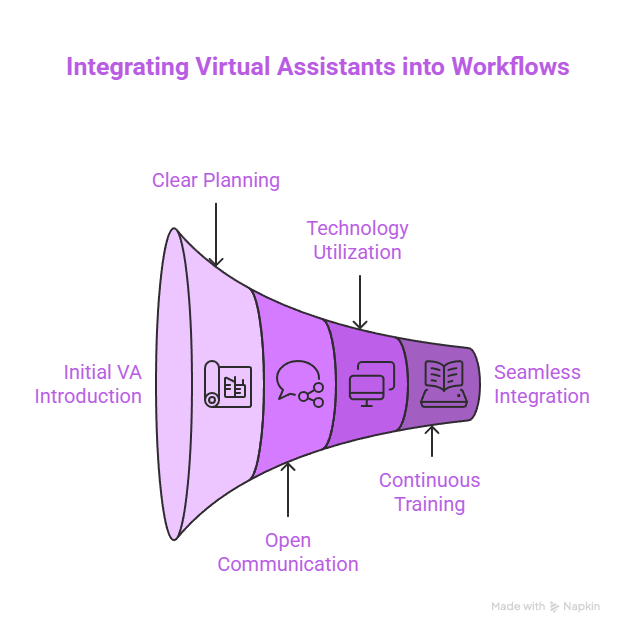
Bringing a virtual assistant into the practice is more than handing off tasks, it is about welcoming them into the rhythm of your team. Clear planning and open communication are key. Walk them through daily routines, show them how your systems work, and let them know who to turn to with questions. This early guidance builds confidence and trust on both sides. With a little care up front, your new VA can settle in smoothly and start making a real difference from day one.
Developing Clear Protocols
Welcoming a virtual assistant into the team works best when everyone knows where they stand. Taking the time to lay out clear roles, daily tasks, and how you will check in helps the assistant feel supported and sure of their place. It is like giving them a map so they can find their way and do their best work. This simple structure builds trust and keeps the whole practice moving as one. With clear guidance, your VA becomes more than just help, they become a steady, reliable part of the care team.
Regular check-ins help keep the virtual assistant and the medical team connected. These simple meetings create space to talk through tasks, solve problems, and share wins. They also give everyone a chance to offer feedback and adjust what is not working. This steady rhythm of support helps the whole team grow together. With open talks and small improvements along the way, trust builds, work flows better, and care stays strong. It is not just about checking in, it is about staying close, even from a distance.
Utilizing Technology for Collaboration
Technology is what makes a virtual assistant feel close, even from far away. Shared calendars help everyone stay in sync, while simple project tools keep tasks clear and on track. Secure chats let the team talk, ask quick questions, and stay connected in real time. These tools are more than just systems, they are bridges that bring people together. With the right setup, your virtual assistant becomes part of the daily rhythm, working with you, not just for you.
Training your virtual assistant on the tools your practice uses is an important first step. It helps them feel confident and ready to work without guesswork or delay. But learning should not stop there. Giving them access to updates, guides, and continued support keeps their skills sharp and their work smooth. As they grow, so does their impact. Using analytics tools can also show how things are running, what’s working well and what could use a change. With this knowledge, you can fine-tune the workflow and help your VA do even more to support your team and your patients.
Measuring the Impact of Virtual Assistants
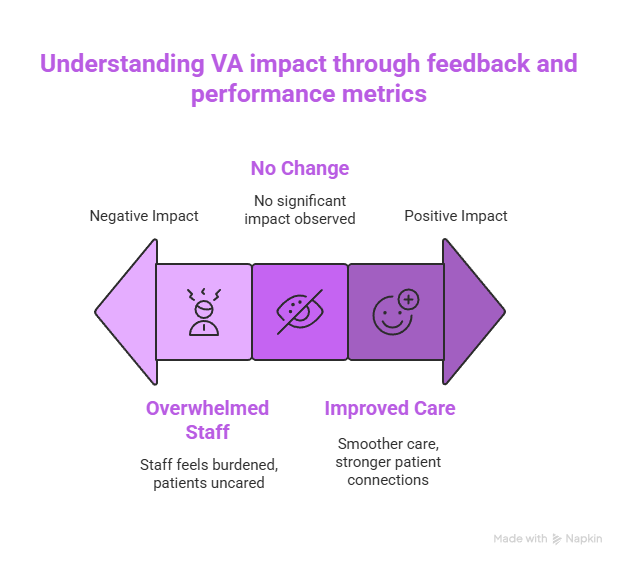
To truly see the value of a virtual assistant, it helps to track their impact. Setting simple metrics like time saved, fewer missed calls, or smoother patient follow-ups, can show how much they help. These numbers give doctors real insight into what is working and where to grow. When a VA lightens the load and helps patients feel more cared for, that is worth noticing. Measuring these moments helps practices decide how to keep building on that success.
Key Performance Indicators (KPIs)
Keeping an eye on a few key signs can show how much a virtual assistant is helping. Patient satisfaction scores, how smoothly appointments are booked, and how accurate records are, all of these tell a story. If those numbers improve, it often means patients feel more cared for and the team feels less overwhelmed. Over time, these simple measures can reveal just how much a VA adds to the heart and flow of a family practice.
Watching how the whole team performs can show the true value of a virtual assistant. If doctors are seeing more patients and care feels smoother, that is a strong sign of success. Tracking how much time the VA saves on daily tasks also matters. When staff spend less time on admin work, they can give more attention to each patient. That extra time can lead to better care, stronger connections, and improved health for the people who matter most.
Soliciting Feedback from Staff and Patients
Listening to both staff and patients gives a clear picture of how a virtual assistant is doing. Staff can share how their workload feels and if they have more time to focus. Patients can speak to how smooth the communication feels and if they feel more cared for. This honest feedback helps the whole team grow together. It shows what is working, what needs adjusting, and keeps the practice moving forward with heart and purpose.
Asking for feedback is not just helpful, it is essential. It gives family practices a chance to learn, grow, and fine-tune how their virtual assistant supports the team. If staff still feel overwhelmed, it might mean the VA needs more training or a shift in duties. If patients say replies feel slow, then improving communication tools or response times can help. These small changes, guided by real voices, lead to big improvements. Checking in, adjusting, and improving together is how a practice makes the most of its VA and keeps care strong for everyone.
Future Trends in Virtual Assistance for Healthcare
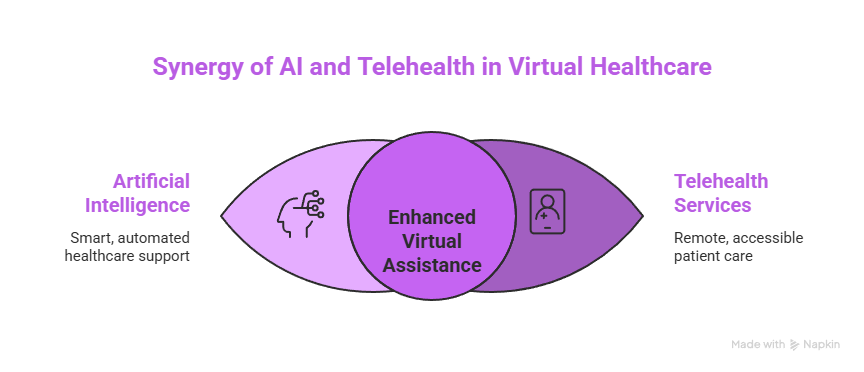
As technology moves forward, virtual assistants are set to become even more important in healthcare. New tools and smarter systems will let them take on more tasks, support doctors in new ways, and stay closely connected to patients. These changes mean VAs can help improve care, reduce stress on staff, and keep clinics running smoothly. With each step, their role grows from helpful support to a vital part of a patient-centered team.
Increased Use of Artificial Intelligence
Artificial intelligence is opening new doors for virtual assistants in healthcare. With AI tools, VAs can answer patient questions faster, book appointments more smoothly, and sort through data with ease. These smart systems help VAs work quicker and make fewer mistakes. As AI and VAs team up, doctors get stronger support and patients get better, faster care. It is a shift that brings more peace of mind to everyone involved.
AI can spot trends in patient care that might be easy to miss. This gives family doctors helpful insights to guide their decisions. As these tools become easier to use, virtual assistants will be able to do even more, offering smarter support, faster answers, and better help with every step of care. It is a future where both doctors and patients benefit from tech that truly understands their needs.
Expansion of Telehealth Services
Telehealth has changed how care feels, it is no longer just in a clinic, but in the comfort of home. Virtual assistants help make that shift feel easy and personal. They gently remind patients about visits, help them log in, and answer questions that pop up along the way. Behind every smooth telehealth call is a VA making sure nothing is missed. They help the care feel just as real, just as warm, even when it happens through a screen.
Virtual assistants help care continue, even after the visit ends. They send follow-up notes, check in on how patients are doing, and make sure nothing slips through the cracks. This gentle outreach keeps patients feeling seen and supported. As telehealth becomes a regular part of family medicine, this kind of steady, caring follow-up will only grow more important. VAs will be right there, helping care feel close, even from afar.
Trending Now
In a family medical practice, the heart of the work is people, but too often, that heart gets buried under phone calls, forms, and endless to-do lists. That’s where a virtual assistant from HelpSquad Health steps in. These aren’t just task managers, they’re thoughtful, trained partners who quietly take care of the background noise. They book visits with care, check insurance with precision, and follow up so patients never feel forgotten. With their help, doctors and staff get to focus on what really matters, being fully present with the people who walk through their doors.
Even though they work from afar, these virtual assistants feel close. They learn the flow of your clinic, understand the tone of your team, and bring a calm presence to even the busiest days. They’re not just filling a gap, they’re adding to the soul of the practice. HelpSquad Health takes time to match each clinic with someone who fits not just the job, but the heart of the team. With a trusted VA in place, care feels warmer, work feels lighter, and everyone, doctors, staff, and patients, can breathe a little easier.
Ready to elevate your family medical practice with the efficiency and patient care improvements discussed in this article? Look no further than HelpSquad Health. Our dedicated virtual assistants and 24/7 customer service team are here to support your healthcare operations, allowing you to concentrate on providing exceptional patient care. Experience the difference with our bilingual agents, starting at the competitive rate of $9 per hour. Take the first step towards optimizing your practice and Start Trial today!

